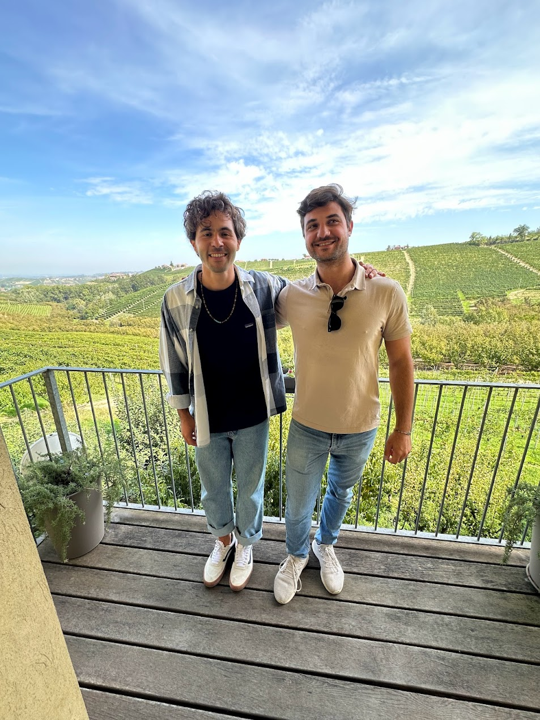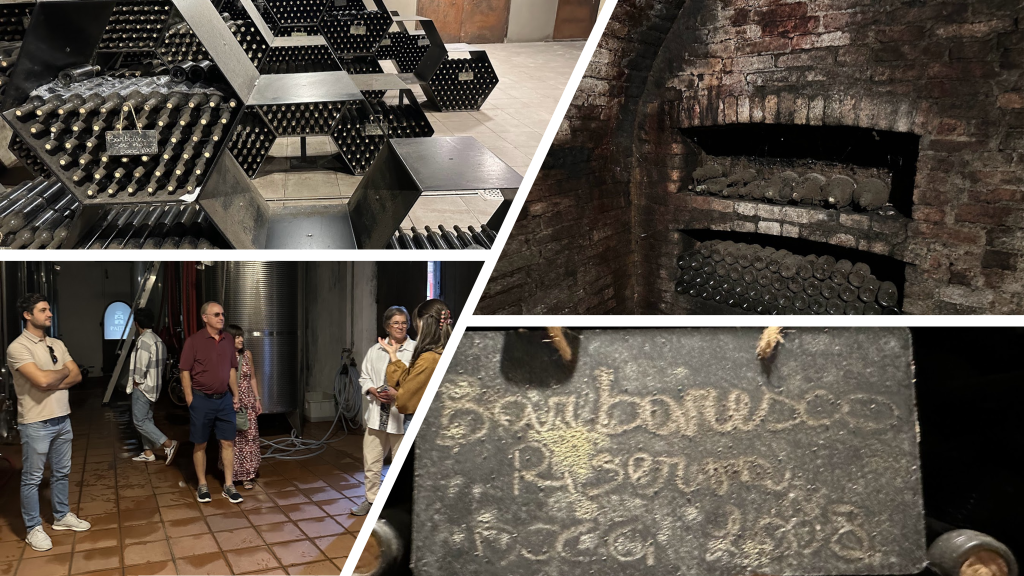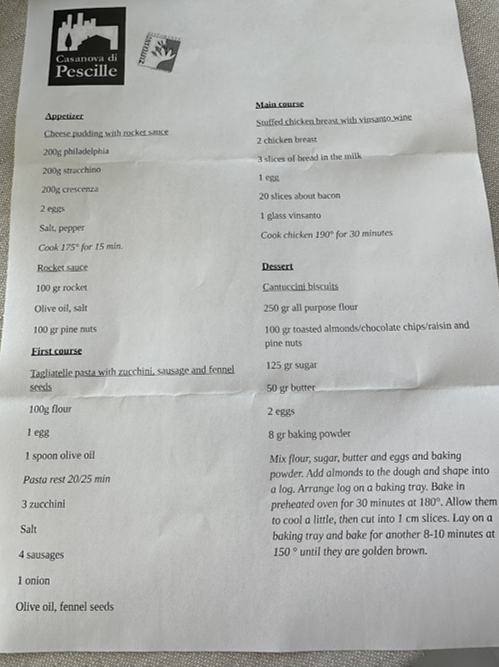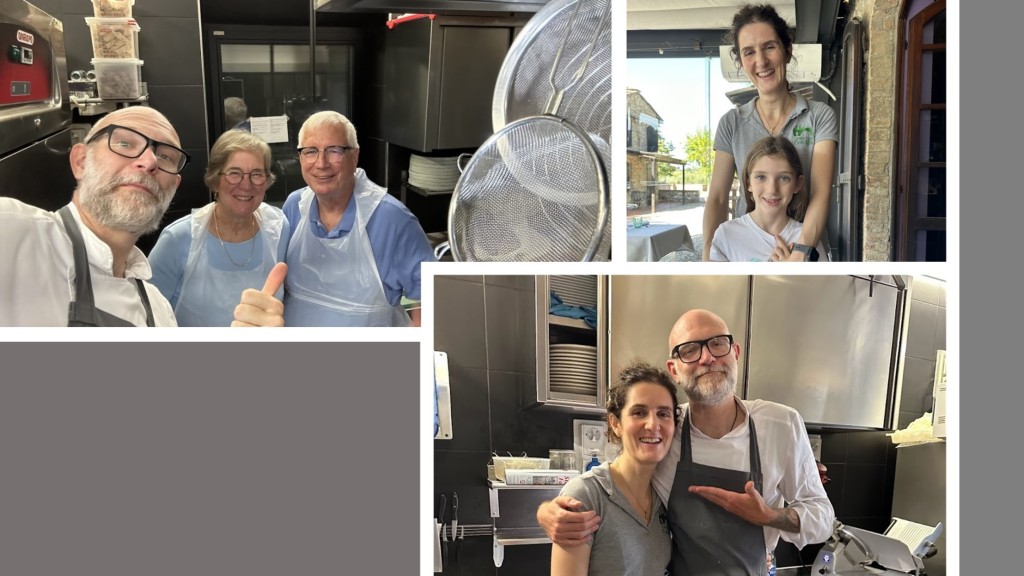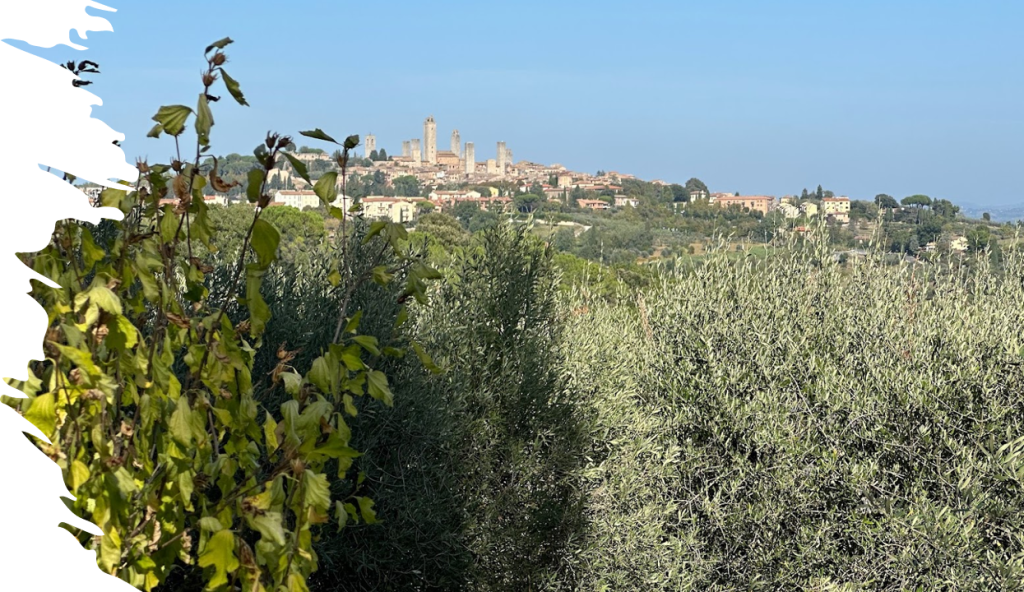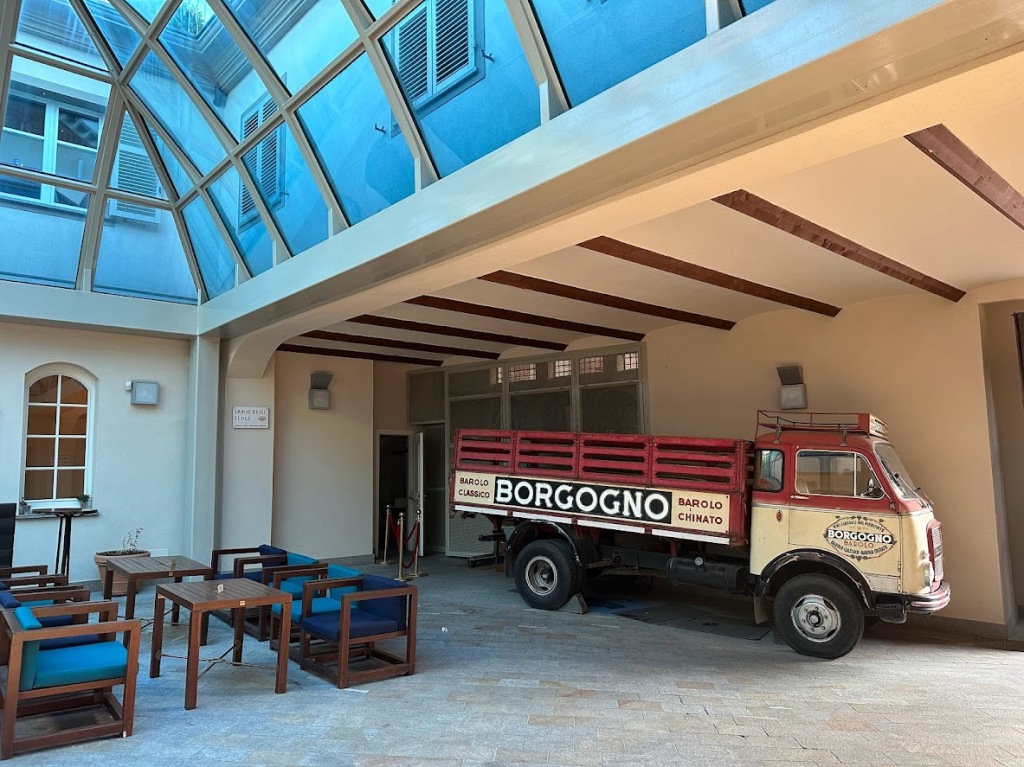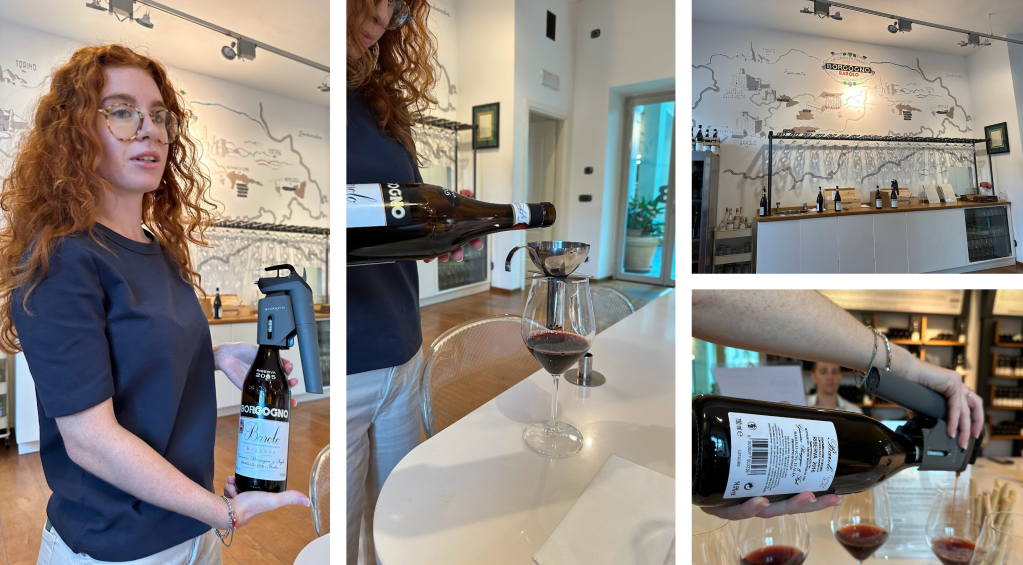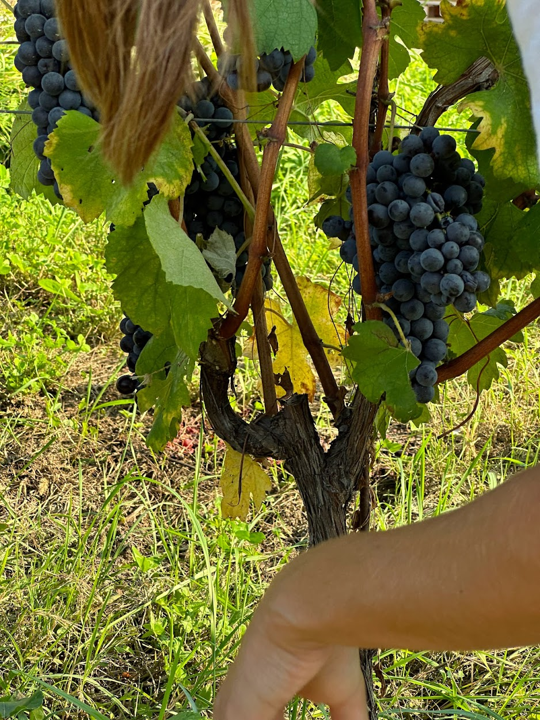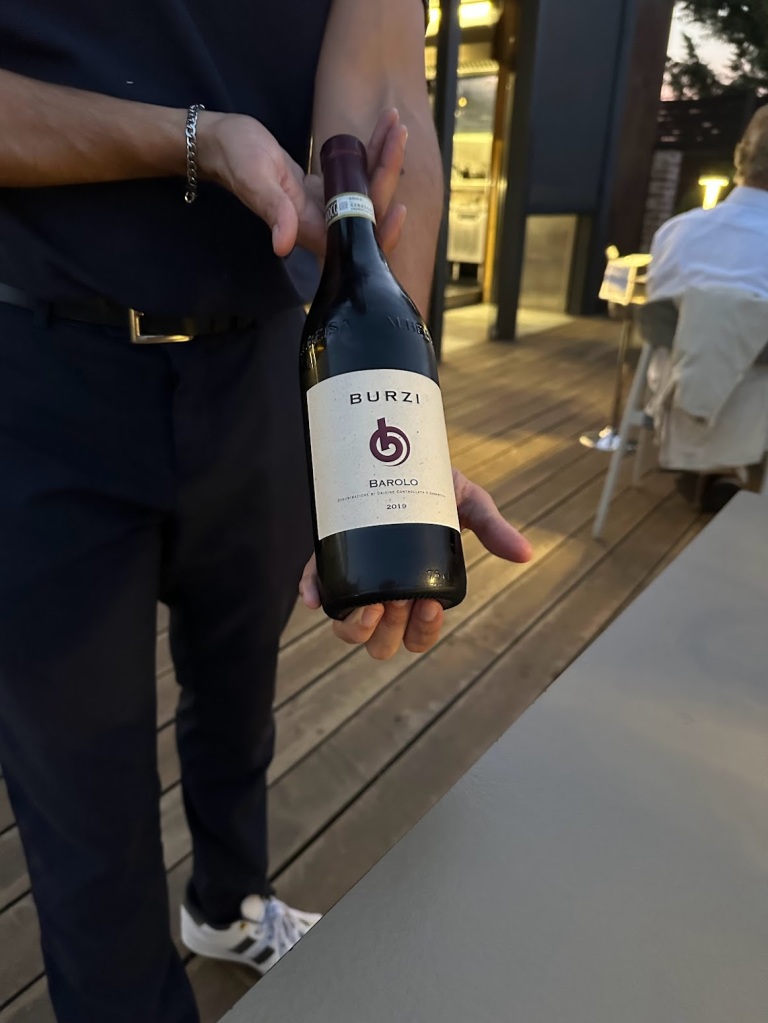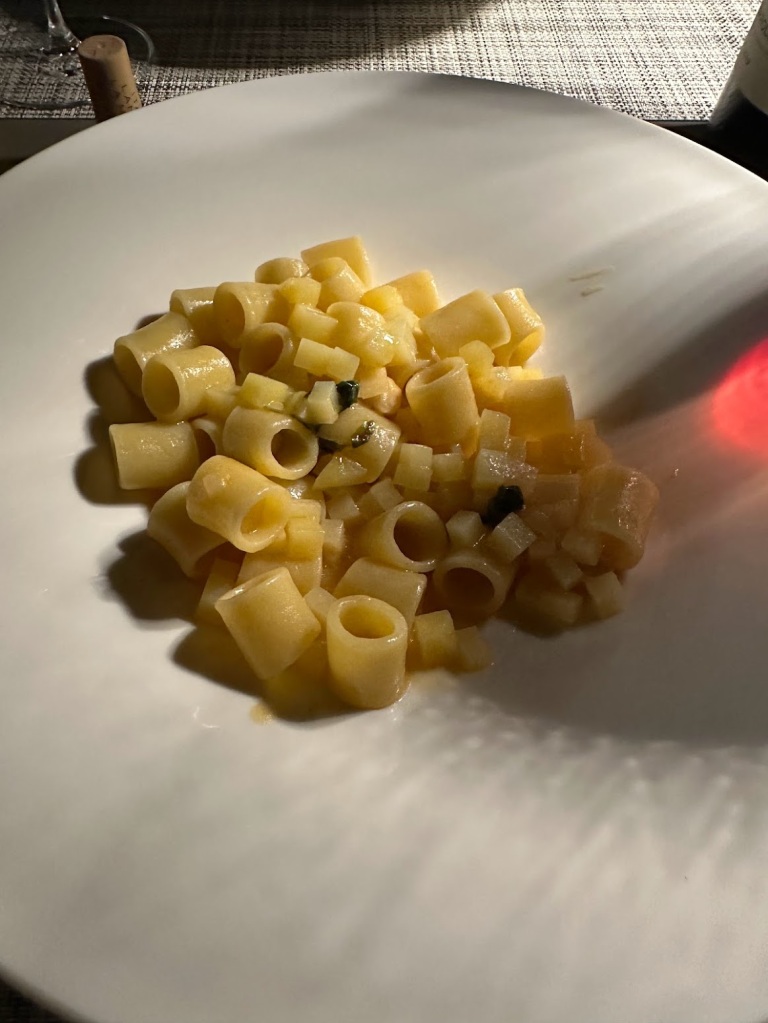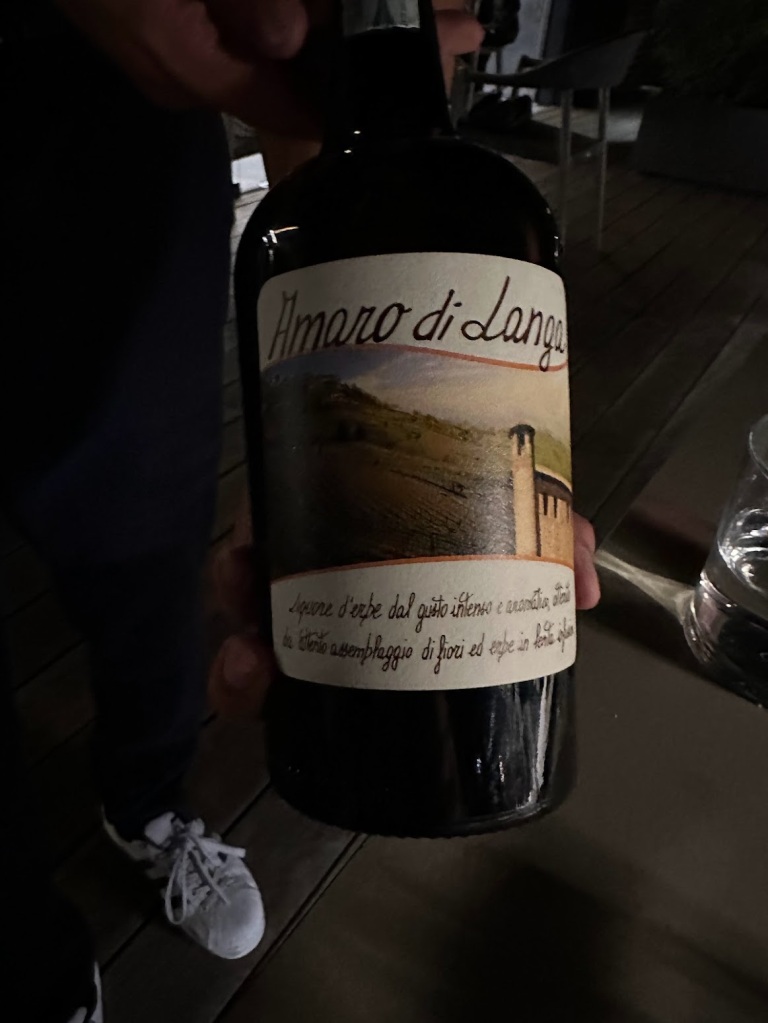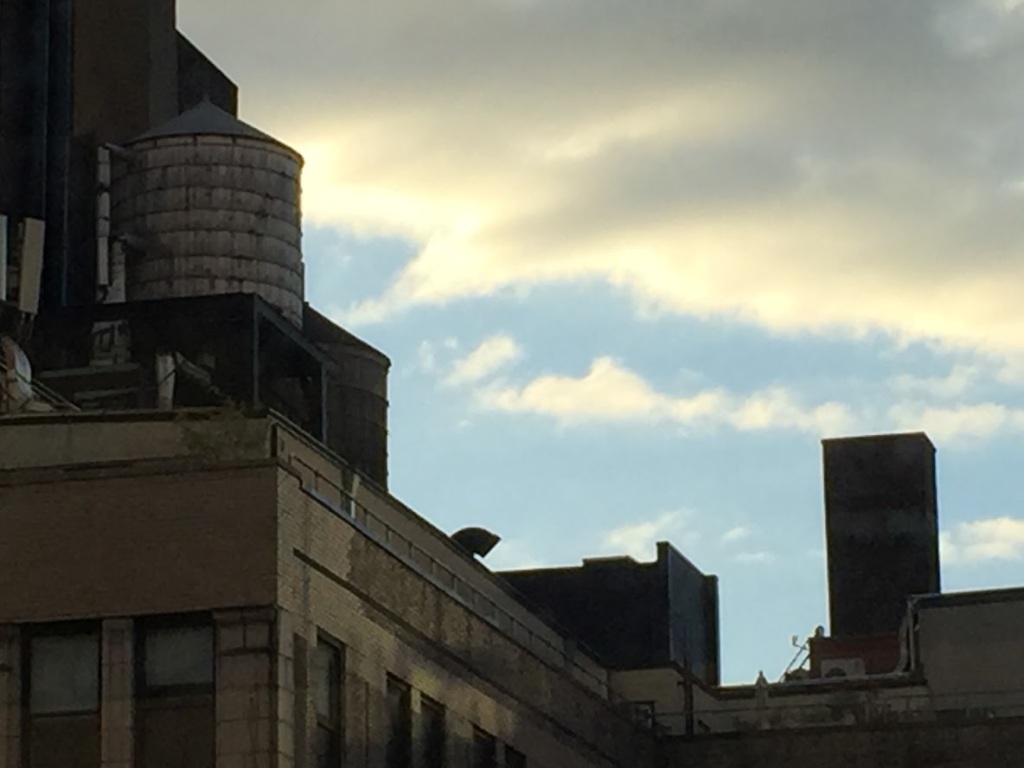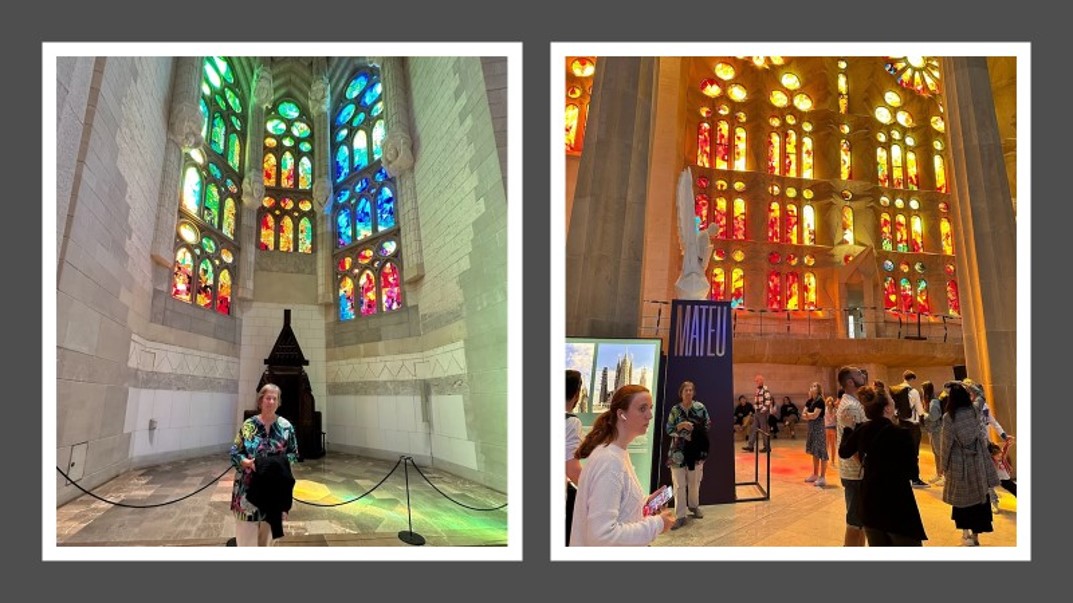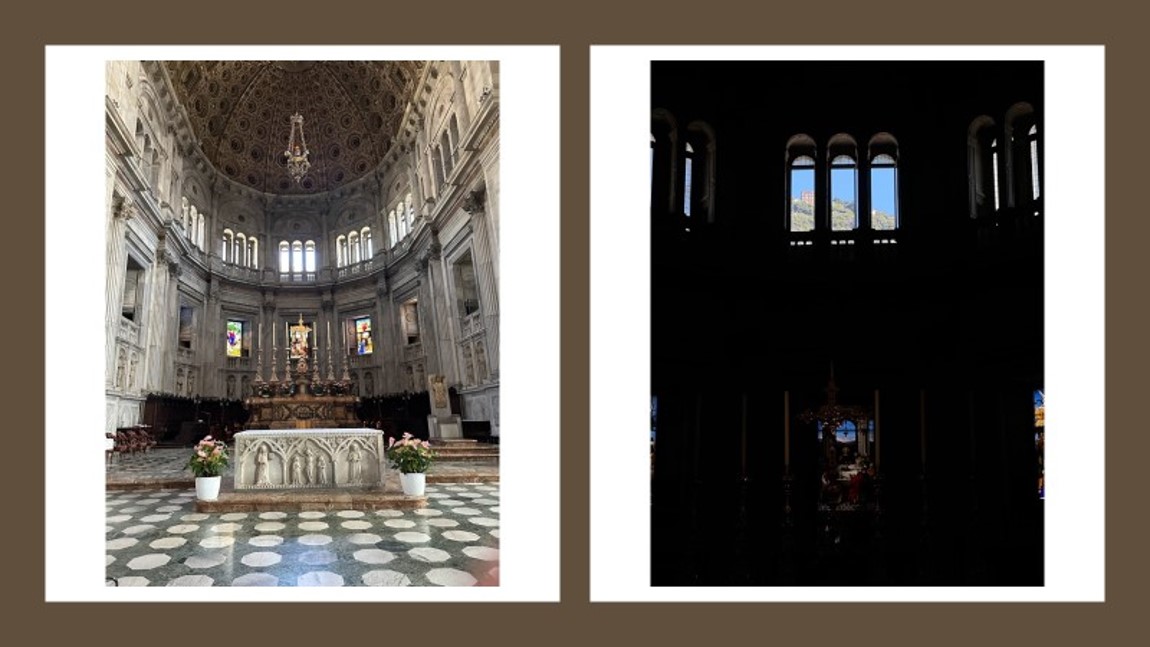After a delightful morning in Barbaresco and a refreshing lunch in Serralunga d’Alba, it was time to reconnect with our OneOnTheHill Somm team for a visit to a Barolo winery. We wandered through the streets of this Barolo hill top village to find the Palladino Winery.


While we waited for the rest of our tour to show up, I looked up the Palladino website:
“An ancient building in the center of Serralunga d’Alba, where the vocation for wine-making is rooted in the past that our winery still preserves tones of today.
“The tradition lives on in a working method that respects the time of the wine, in the long process of fermentation, and in the choice of materials capable of enhancing the characteristics of the grapes, without ever altering their nature.”
What a great foreshadowing of what we were to experience. Veronica, one of the family owners, greeted us and provided a fantastic tour of the subterranean and quite old cellars (even though the winery was started in 1974).
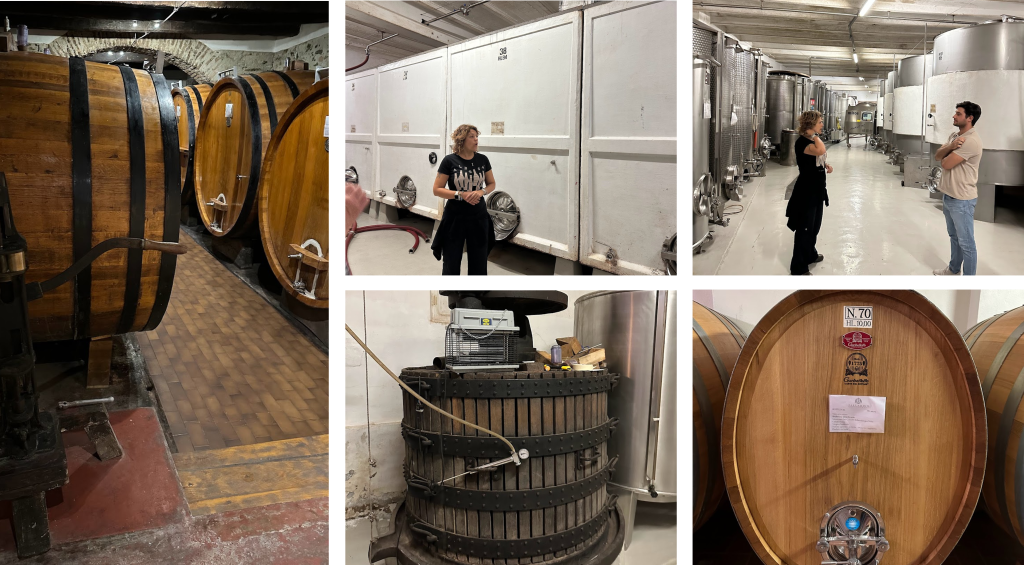
We slowly made our way down to the cellars with Vernoica explaining each step in their process of making wines. As we got to the lowest part of the winery, the opening in the brick cellar wall allowed us to break off and sample the clay that lies under the vineyards in the Serralunga d’Alba area.
I was fascinated once again by the mixture of the very old and the new in this region of wine for the kings. Now to taste the fruits of Veronica’s family labors.
We adjourned to the tasting room by wandering back through the winery and the bottling room. As we tasted through the many Barolo and Barbera wines that Palladino had to offer, Veronica shared the backgrounds of the vineyards that Palladino owns.
The wines were luscious. We quickly decided that the Parafada and the Ornato wines were what we would order and ship home.
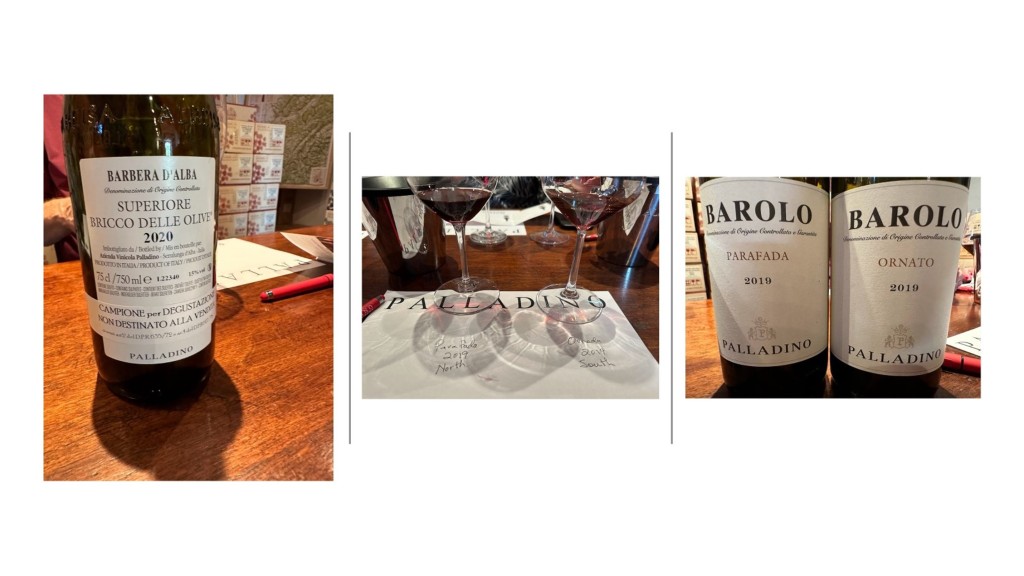
I can’t resist capturing the light that flows through a crystal wine glass that has a red wine inside.
We are deeply appreciative of Pier and the great folks at OneOnTheHill for creating a wonderful experience in the hills of the Piedmont Italy region. Their enthusiasm, knowledge and knowing where to visit added another layer of depth to our wine knowledge.


